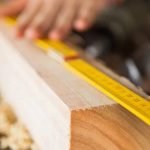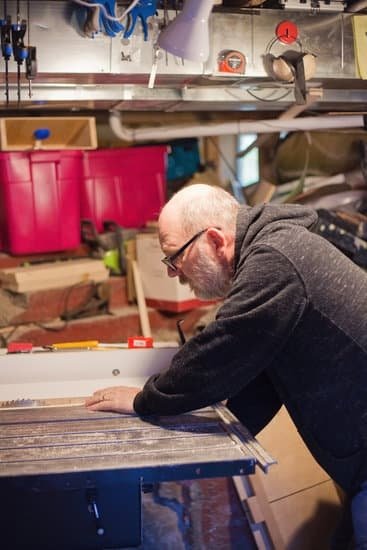Introduction
Drying wood at home for woodworking is an economical and cost-effective way to obtain quality wood materials for your project, as opposed to purchasing pre-dried lumber. Drying your own wood also ensures that it reaches the desired moisture content levels and is free from defects and high levels of toxins. Home drying also guaranties that the lumber has been dried properly, making it easier to work with when constructing a variety of furniture items such as cabinets, chairs, tables, and more. It also helps ensure safer working conditions since lumber that has been improperly dried can often expand or contract quickly once exposed to extreme temperatures or humidity levels. Home drying is also beneficial because it allows you to obtain lumber from local sources, giving you complete control over the drying process from start to finish. Additionally, it significantly reduces waste by allowing you to keep scraps or offcuts in proper condition without risk of warping or splitting while in storage. Once the wood has been properly dried and prepared, it can then be used in any number of woodworking projects.
Types of Wood
The type of wood you choose for your woodworking project is important in determining the end result of your finished piece. Different woods offer different benefits, depending on the project and your preferences. The following are some of the most popular woods used for woodworking and their characteristics and benefits.
Pine: Pine is a light-colored softwood with a coarse texture. It’s easy to work with and creates lovely natural patterns. Pine is perfect for making doors, tables, chairs, mantels and other furniture pieces that are highly decorative but not necessarily intended for everyday use.
Oak: Oak has a beautiful grain pattern and it comes in both light and dark colors, giving it incredible versatility. Oak is great for creating furniture pieces that will stand up to a lot of wear like dining sets or dressers, as well as more ornate wooden objects such as sculptures or framed artwork.
Maple: Maple is another very strong hardwood with a smooth finish perfect for fine details like mouldings or relief carvings. Maple is often used to make high-end kitchen pieces due to its strength and also its aesthetic appeal.
Cherry: This sweet-smelling hardwood has rich red undertones that make it perfect for furniture pieces that are meant to be showpieces such as accent cabinets or centre tables. Cherry takes stain very well so you can customize the type of design you want for these items without sacrificing the look of real wood grain.
Walnut: Walnut has dark chocolate undertones which give it an extremely elegant feel ideal for high-end décor items like chest boxes or frames intended to take center stage in any room or office space. Its grain patterns can often seem spectacularly intricate compared to other types of wood giving projects made from this type an extra touch of style that really stands out from generic manufactured items.
Drying Wood at Home For Woodworking: With any type of wooden finished project you need to properly dry the material before implementing it in your design if you want lasting results. You can do this by air drying the wood outdoors on flat surfaces until it reaches its ideal moisture content level before staining or finishing it off with sealant protectants to ensure continued longevity throughout time even when exposed to lots of handling over time via different people living in the same home working day after day near these pieces!
Tool Review
When looking to dry wood for woodworking projects, there are many different tools you can use. Some of the most popular include a lumber kiln, drying oven, moisture meter, and a dehumidifier.
A lumber kiln is a large, heated chamber designed to quickly dry out large amounts of wood in a very short amount of time. Special controls will ensure that the temperature and humidity in the kiln remain stable throughout the drying process.
A drying oven is a large box with small doors on either side that you mount wood inside of for short periods of time (at least one hour). While the temperature within an oven will not reach as high as it would in a kiln, it allows you to speed up the process of removing moisture from pieces of wood before undertaking your project.
Moisture meters measure how much water is present in any materials exposed to them. This can be useful when it comes to making sure that your wood has reached its desired level of dryness before beginning work. Lastly, dehumidifiers help remove latent moisture from your working area that might otherwise cause problems down the line.
First Steps
Before you begin to dry your wood at home, it is important to prepare the wood correctly. This will help ensure that you get the best results possible when drying your wood. The most important preparation step you can take when drying wood at home is to properly season the lumber. This involves removing any remaining moisture content from the lumber and getting it down to a suitable starting point for drying. To do this, you should first select a kiln or outdoor space that has good air circulation and moderate humidity levels. Then, depending on the type of wood, adjust the temperature levels within your kiln or outdoor space accordingly. For example, if you are working with softwoods like Pine or Douglas Fir, be sure to maintain temperatures between 80-90°F for 1-4 weeks in order for optimal seasoning. Once the desired moisture level is achieved (the standard is 10-12% moisture content), your wood should be ready to begin being dried in earnest!
Benefits of Kiln Drying
Kiln drying wood is the process of using a kiln to remove residual moisture content from the wood. The purpose of this is to make it ready to use in projects such as woodworking. Kiln drying offers multiple benefits and can be done at home if you have the necessary equipment.
Benefits of kiln drying wood:
• Kilns are designed to precisely control temperature, humidity, and air circulation which helps maintain a consistent quality when drying wood.
• Dried lumber will hold nails better and glue better than wet lumber.
• Kiln dried lumber has no preservatives, making it perfect for indoor projects where chemicals are not desired near your family and pets.
• Wood can be dried much faster than with other methods, meaning less time wasted waiting for the material to dry completely.
• Finished products made with dried lumber are less likely to warp or crack over time due to inconsistencies in moisture content between different boards.
• Kilns also allow more accurate measurement of a board’s moisture content, meaning that projects can be completed with greater accuracy and precision than trying to calculate successively drier boards through air-drying alone.
Potential Downsides of Kiln Drying Wood:
• Requires specialized equipment that can be cost prohibitive for some people looking to get into woodworking but not wanting to invest in a kiln or hire a professional service that uses one.
• Improper use of a kiln could cause damage to the wood due to improper heat or humidity levels that are too high or too low for a given species or piece of lumber being used for a project. This could result in warped boards or cracks from too-rapid drying leading to pressure gradients developing along lengthwise grain patterns in the material itself.
Air Drying Techniques
Air drying wood is a cost-effective and time-saving way to obtain the desired level of moisture for woodworking projects. When air drying wood at home, it’s important to remember that some methods work better in different climates and with different types of woods.
Open-Air Drying: This method involves stacking kiln-dried or green timber in an open area, such as a shed or garage, making sure there is plenty of space between each piece to encourage ventilation. This works best in dry climates with little rainfall as the wood exposed to weather can slow down the drying process.
Deck/Ground Stacking: This method involves placing cut timber on a platform of saw horses and covering the stack with tarpaulin on both sides and all sides. This allows condensation to occur, helping equalize the moisture content in each piece. The cover tarp should be fastened secure enough so only minimal airflow escape over time but loose enough for any excess moisture buildup to escape as gas through small openings. It’s more effective in dry climates but also does well in humid environments if done correctly and checked regularly for proper ventilation.
Stove-Drying Technique: For this method, cut pieces are placed inside a preheated stove or oven set to close to 140°F (60°C). During this technique, humidity levels must be monitored using a hygrometer and periodically adjusted according to the species and location of timber being dried. The heat not only accelerates the evaporation process but also eliminates microorganisms that can cause discoloration or decay during air drying.
Regardless of which air drying technique is used, it’s important to make sure adequate safety measures are taken throughout the process—including wearing gloves when handling lumber, proper clothing protection against splinters while handling material outside, eye protection when drilling pilot holes into wood pieces and proper ventilation while baking lumber indoors due to volatile fumes from coating agents and varnishes—to ensure successful results while completing any woodworking project!
Finishing Touches
After the wood has been dried, it is time to finish the wood. There are several types of finishing techniques that can be used depending on the type of woodworking project. For example, if you want to paint or stain the wood, oil-based products work best because they provide an even and durable surface. Other options include waxing, shellacking and varnishing. A custom finish can also be achieved by applying multiple coats of a different finish for each layer – such as first applying wax and then adding varnish on top for more protection. Sanding between coats can also help create a smooth finish. Before using any finishing product, always sand down rough edges or splinters to ensure a completely smooth surface before application takes place. Finally, for outdoor projects such as fences or decks, consider staining to protect against water damage and fading from UV rays.
Wrapping Up
When drying wood at home for use in woodworking projects, it is important to take your time and ensure the proper precautions are taken. It is imperative that you understand how to dry wood before beginning the process. First, you should select a location free of debris and direct sunlight for your drying area. Next, determine the moisture content of the wood using moisture meters or giving it a thorough visual inspection. After determining this information, choose an appropriate drying method for the type of wood you are working with; air-drying or kiln-drying may be suitable depending on what you require from the material. Finally, maintain your storage conditions while keeping an eye out for any signs of decay or warping caused by too much moisture.
Once these steps have been successfully followed, you can begin to work with your dried wood in confidence knowing that its properties remain reliable during and after use in future projects. To learn more about drying wood at home and other relevant information regarding woodworking topics such as sanding, cutting, and joinery techniques, there are plenty of resources available online and at bookstores specialising in craftsmanship or carpentry projects. Additionally, it is always recommended to join forums related to woodworking and craftsmanship so that experienced enthusiasts can share their knowledge on best practices with others interested in learning more about these topics.

Hi everyone! I’m a woodworker and blogger, and this is my woodworking blog. In my blog, I share tips and tricks for woodworkers of all skill levels, as well as project ideas that you can try yourself.





